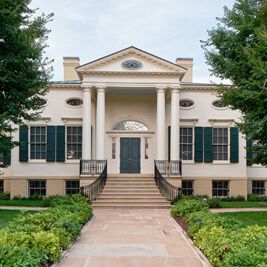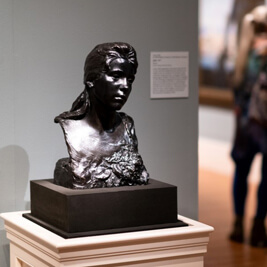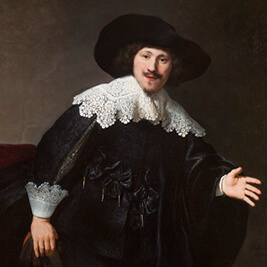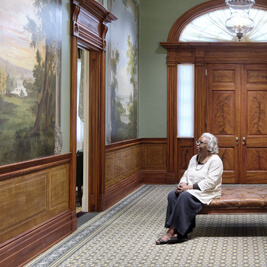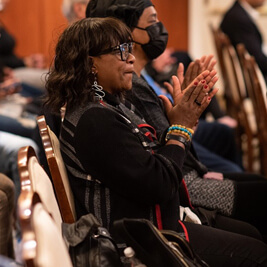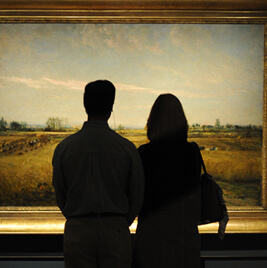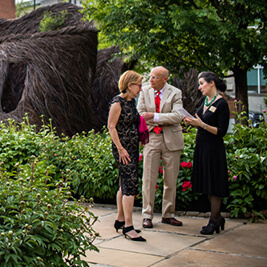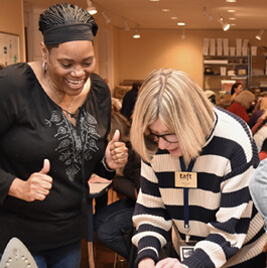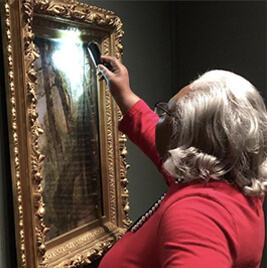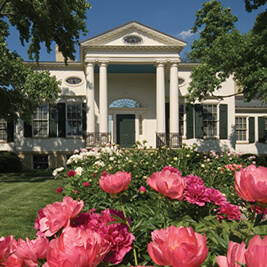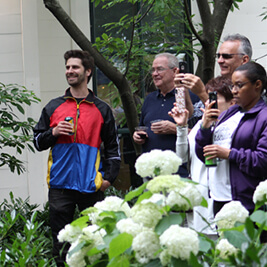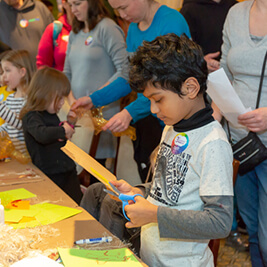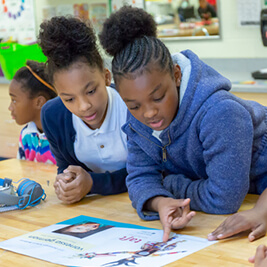- Do + See
- Dine + Host
- Give + Join
- Educate + Learn
Nancy Ford Cones: Collection Connections
by Tamera Lenz Muente, Curator
As I became familiar with the photographs in the fall exhibition at the Taft Museum of Art, Craft and Camera: The Art of Nancy Ford Cones, I was struck by the similarities between some of Cones’s prints and paintings in the Taft’s permanent collection.
Cones was inspired by European paintings. She studied images in Art and Artists of All Nations, a large book she owned that included more than 400 reproductions, most of which are popular sentimental and whimsical paintings. There’s also evidence that Cones was familiar with more serious art. On one occasion, Cones dressed herself in costume for a photograph that emulated Thomas Gainsborough’s portrait of actress Sarah Siddons. While this painting is not in the Taft collection, the museum owns two other portraits by the British artist.
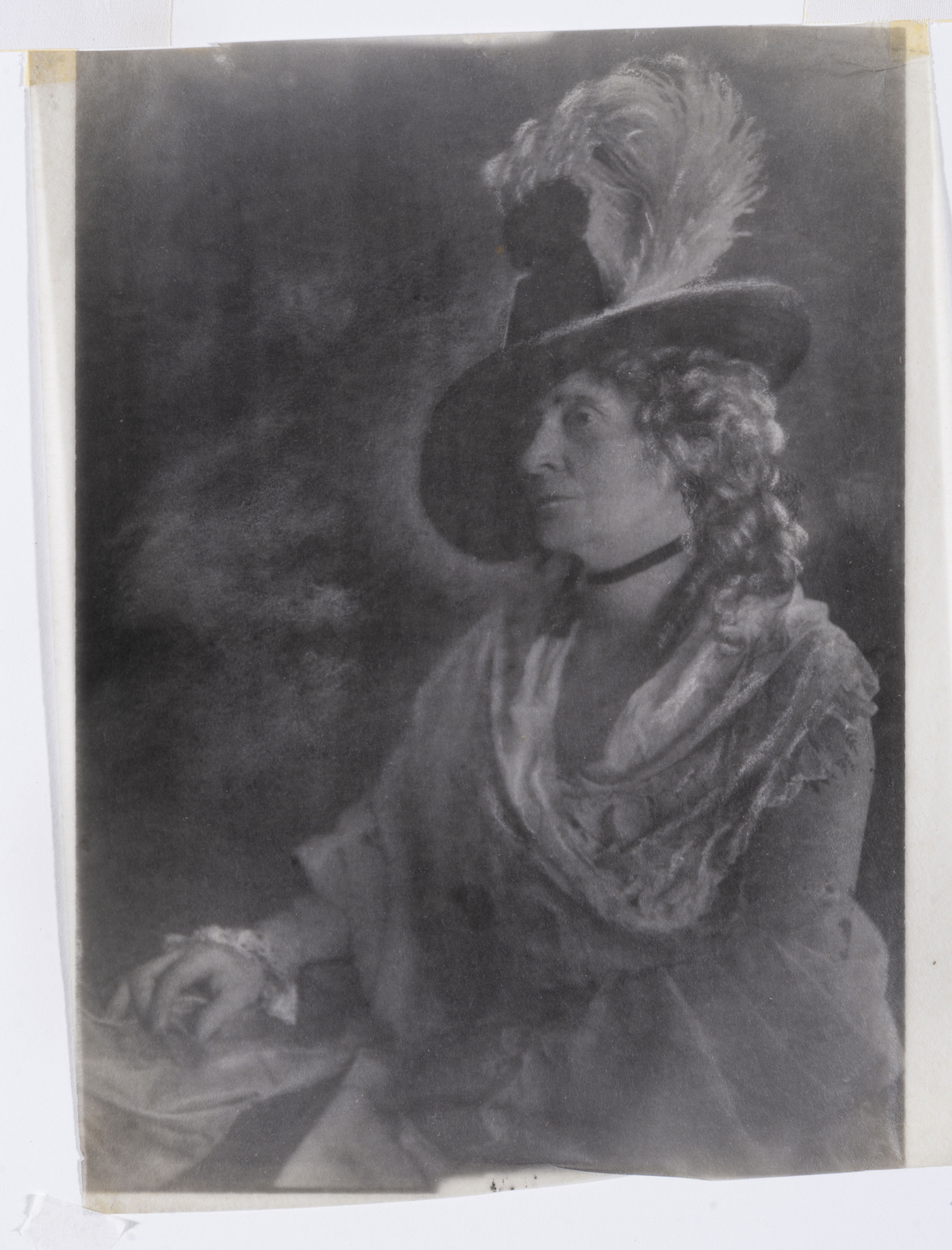
Nancy Ford Cones (American, 1869–1962), Self-portrait as Sarah Siddons (detail), about 1930, tissue print. Collection of W. Roger and Patricia K. Fry
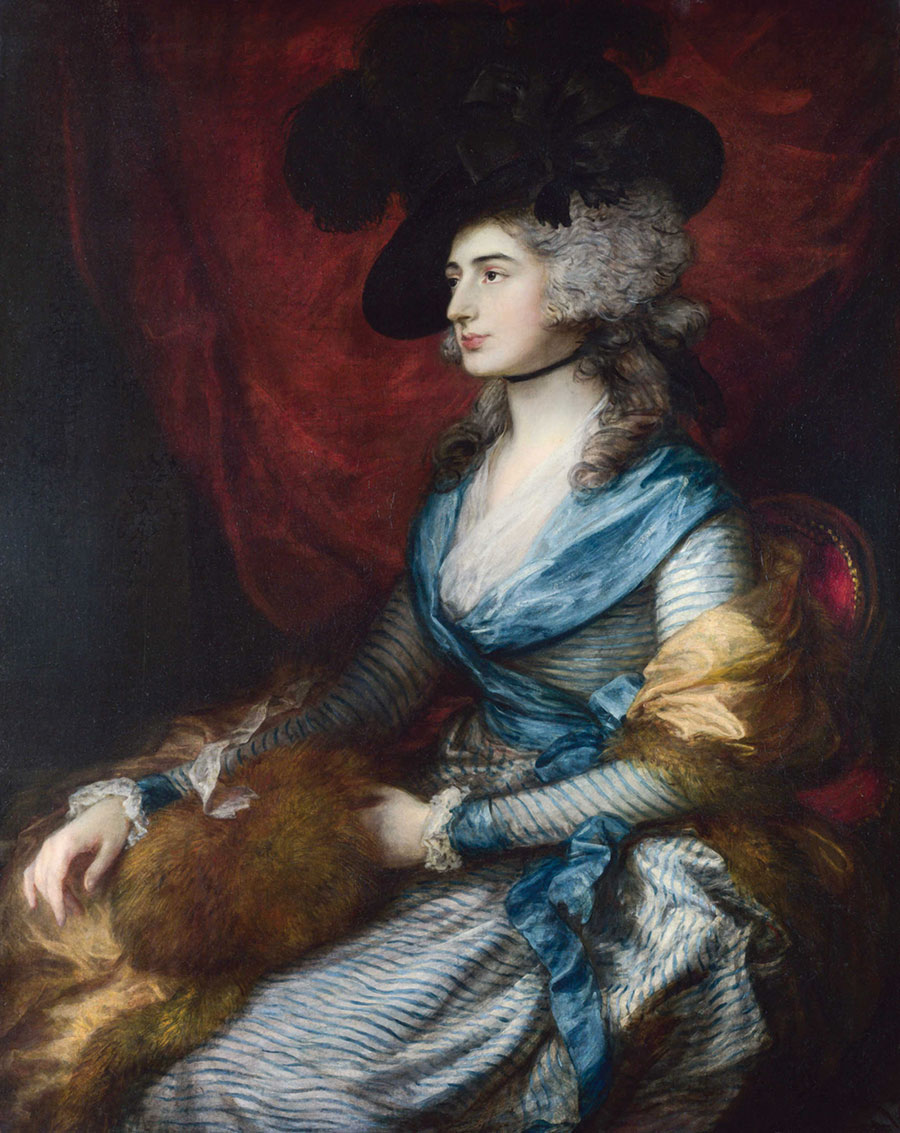
Thomas Gainsborough (English, 1727–1788), Mrs. Siddons, 1785, oil on canvas. National Gallery, 10 London NG683
-
Nancy Ford Cones found inspiration in her daily life and in Dutch and French paintings similar to those in the Taft collection. The following are paintings that demonstrate the subjects—especially portraits and scenes from daily life—that influenced Cones.
Nostalgic Domestic Scenes
Threading the Needle (pictured below, at left) earned Cones a prize in the 1905 Kodak competition. According to Kodak, “Every picture should tell a story.” Cones’s winning photograph shared a nostalgic narrative as an old woman teaches her granddaughter how to sew. The work finds its roots in European genre paintings, or scenes from daily life. A terrific example is Jozef Israëls’s Sewing School at Katwijk (below, at right). Both Israëls’s and Cones’s works highlight the story of women passing knowledge to younger generations.
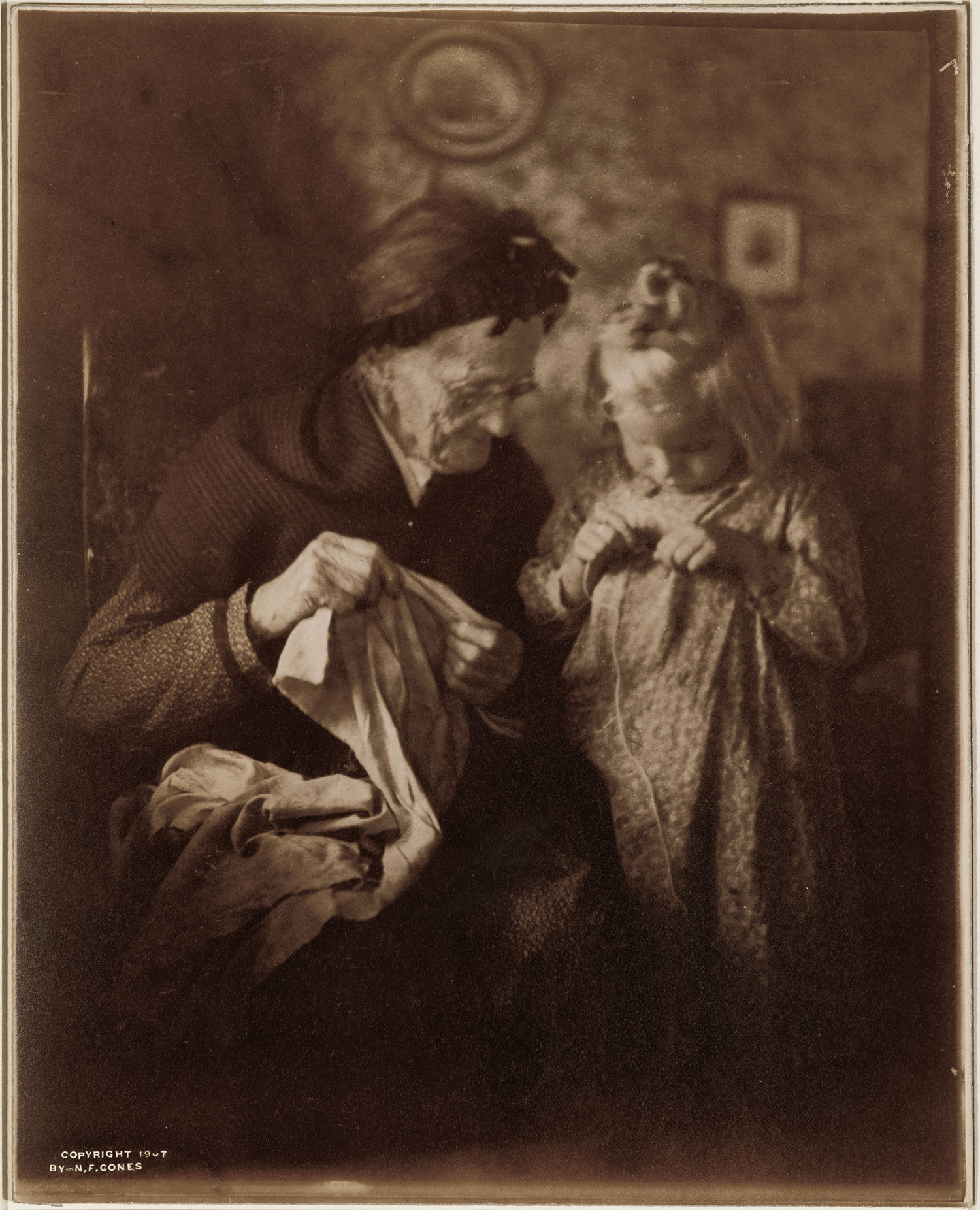
Nancy Ford Cones (American, 1869–1962), Threading the Needle or Helping Grandmother Sew, 1905 (printed 1907), gelatin silver print. Dayton Art Institute, Gift of Miss Jane Reece, 1952.19.495
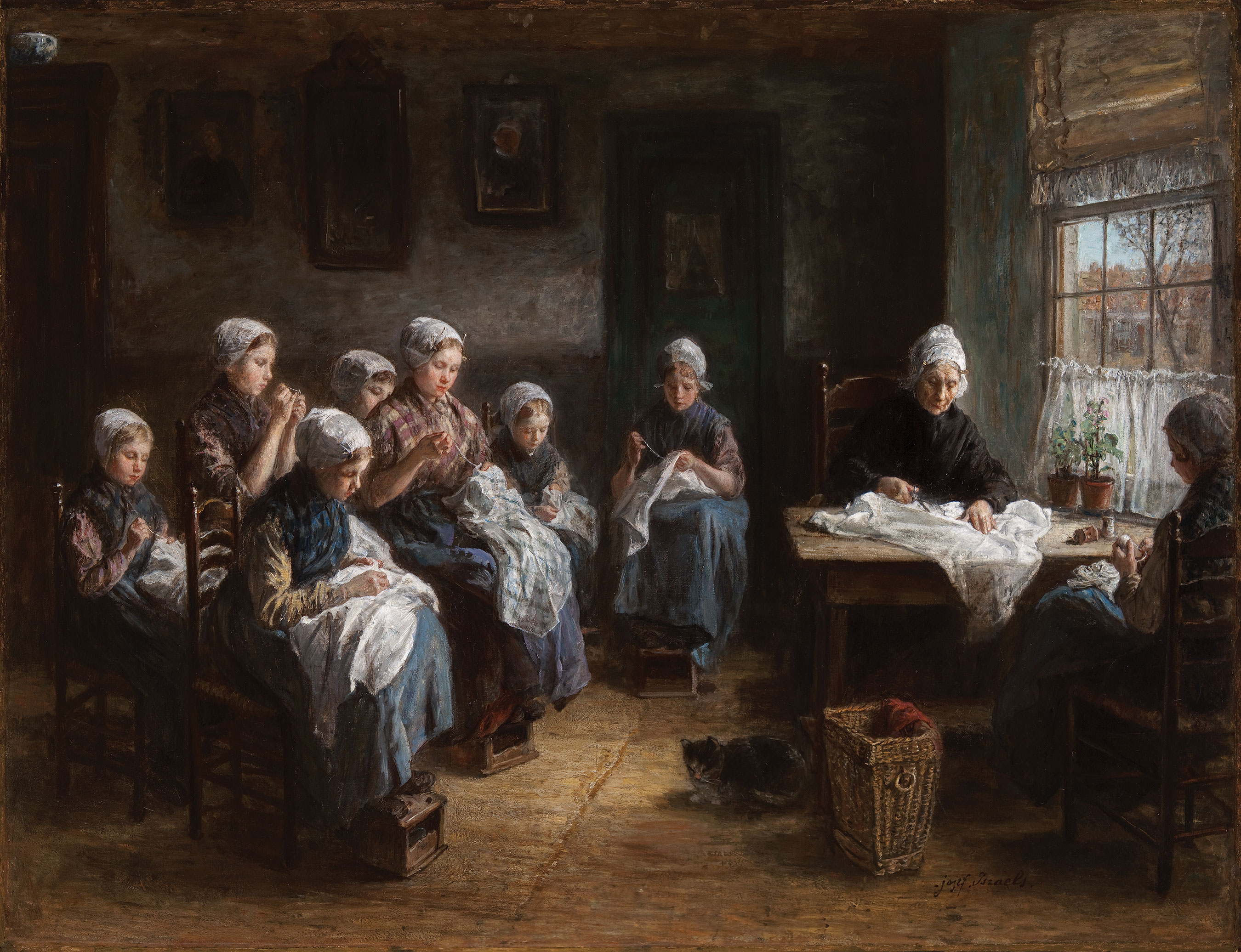
Jozef Israëls (Dutch, 1824–1911), Sewing School at Katwijk (detail), 1881, oil on canvas. Taft Museum of Art, Bequest of Charles Phelps Taft and Anna Sinton Taft, 1931.460
Idyllic Rural Life
Many French painters in the 1800s painted peasants at work. Here, French artist Narcisse Virgile Diaz de la Peña and Cones present people laboring in the forest. The painter and photographer both chose to highlight the workers’ idyllic connection to nature rather than the menial aspects of their tasks. Art and Artists of All Nations included a landscape by Camille Corot (one of Charles and Anna Taft’s favorite artists) that featured peasants gathering wood, similar in subject to this work by Diaz.
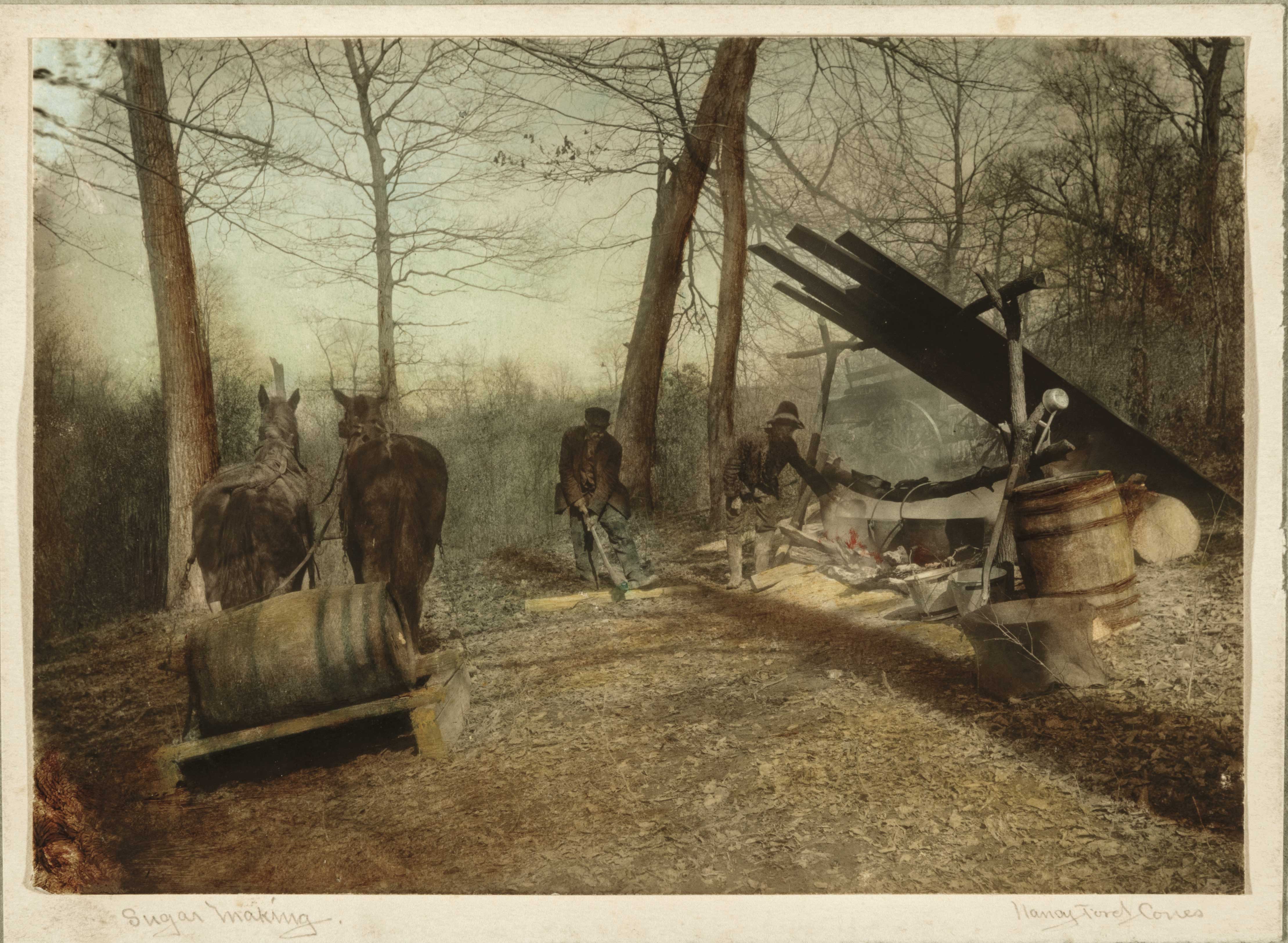
Nancy Ford Cones, (American, 1869–1962), Sugarmaking, 1920, hand-colored print. Collection of Randle and Cristina Egbert
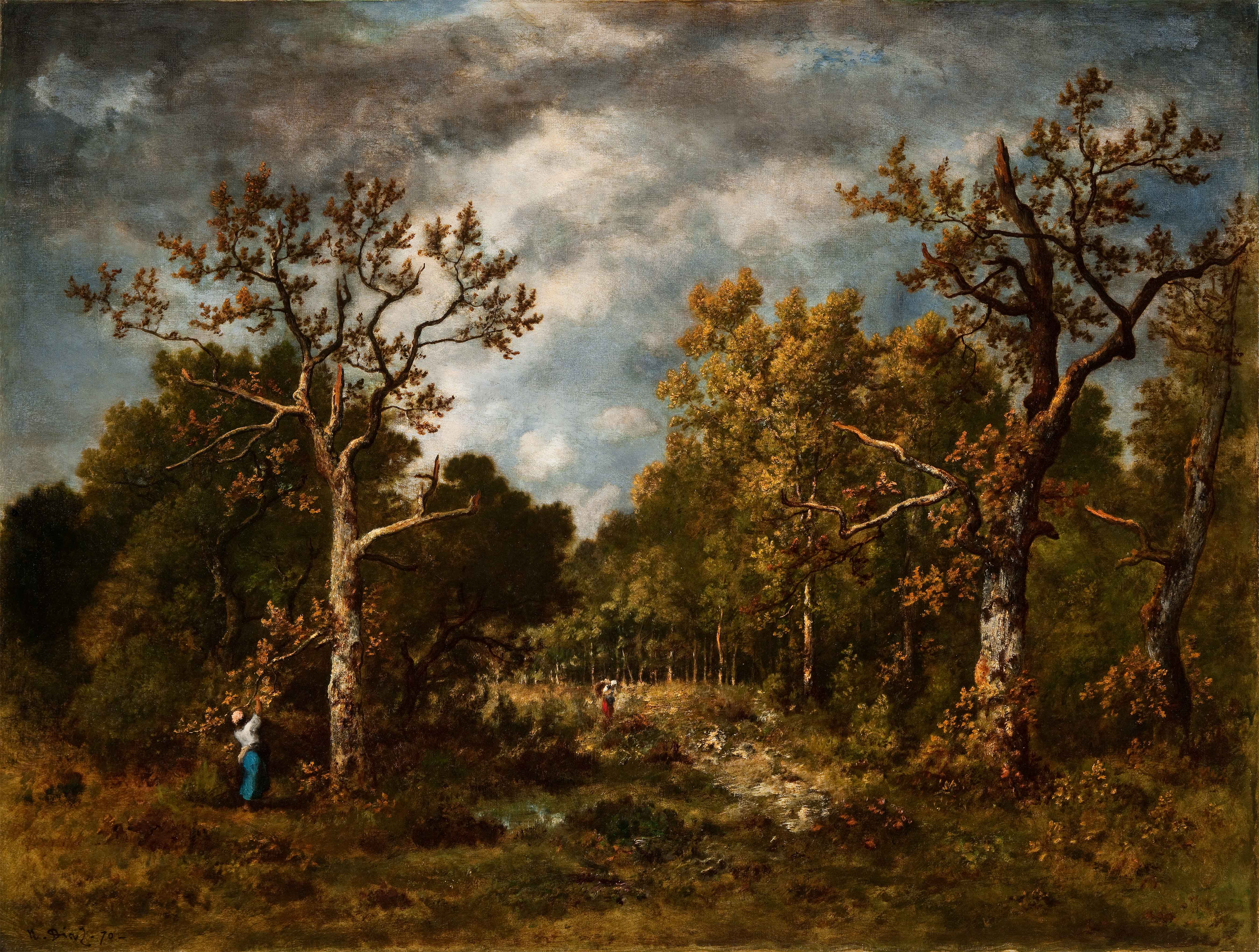
Narcisse Virgile Diaz de la Peña (French, 1807–1876), Early Autumn: Forest of Fontainebleau, 1870, oil on canvas. Taft Museum of Art, Bequest of Charles Phelps Taft and Anna Sinton Taft, 1931.464
Fantastical Portraits
Cones’s fanciful character studies were likely inspired by Dutch paintings of the 1600s. Artists including Rembrandt van Rijn and Govaert Flinck, both represented in the Taft collection, painted figures dressed in costume to spark viewers’ imaginations. Cones’s subject matter and printing process emulated these paintings—gum bichromate prints created subtle shifts from light to dark and soft edges that imitated loose brushwork.
Did Cones see the Taft collection first-hand? Charles and Anna Taft’s home did not become a museum until 1932, near the end of Cones’s creative output. However, she photographed a woman with a camera standing in front of the Taft home in 1912 and around that same year made portraits of the Taft family (the locations of which are unknown). Did the Tafts invite her to see their collection at that time, as they had invited other artists? It’s plausible, but we may never know for sure.
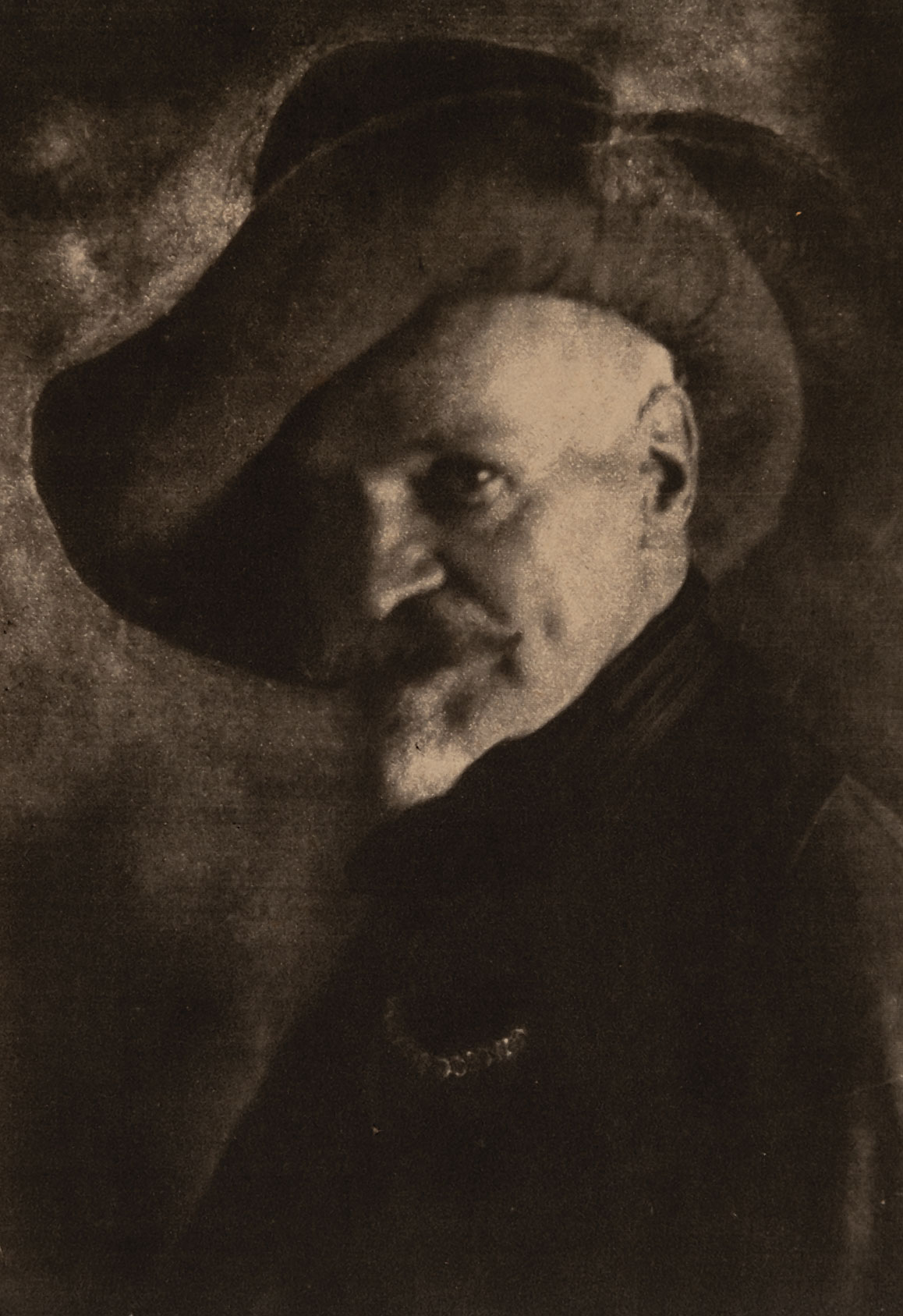
Nancy Ford Cones (American, 1869–1962), In the Days of Old When Knights Were Bold, 1921, gum bichromate print. Loveland Museum Center, 1998.023.033
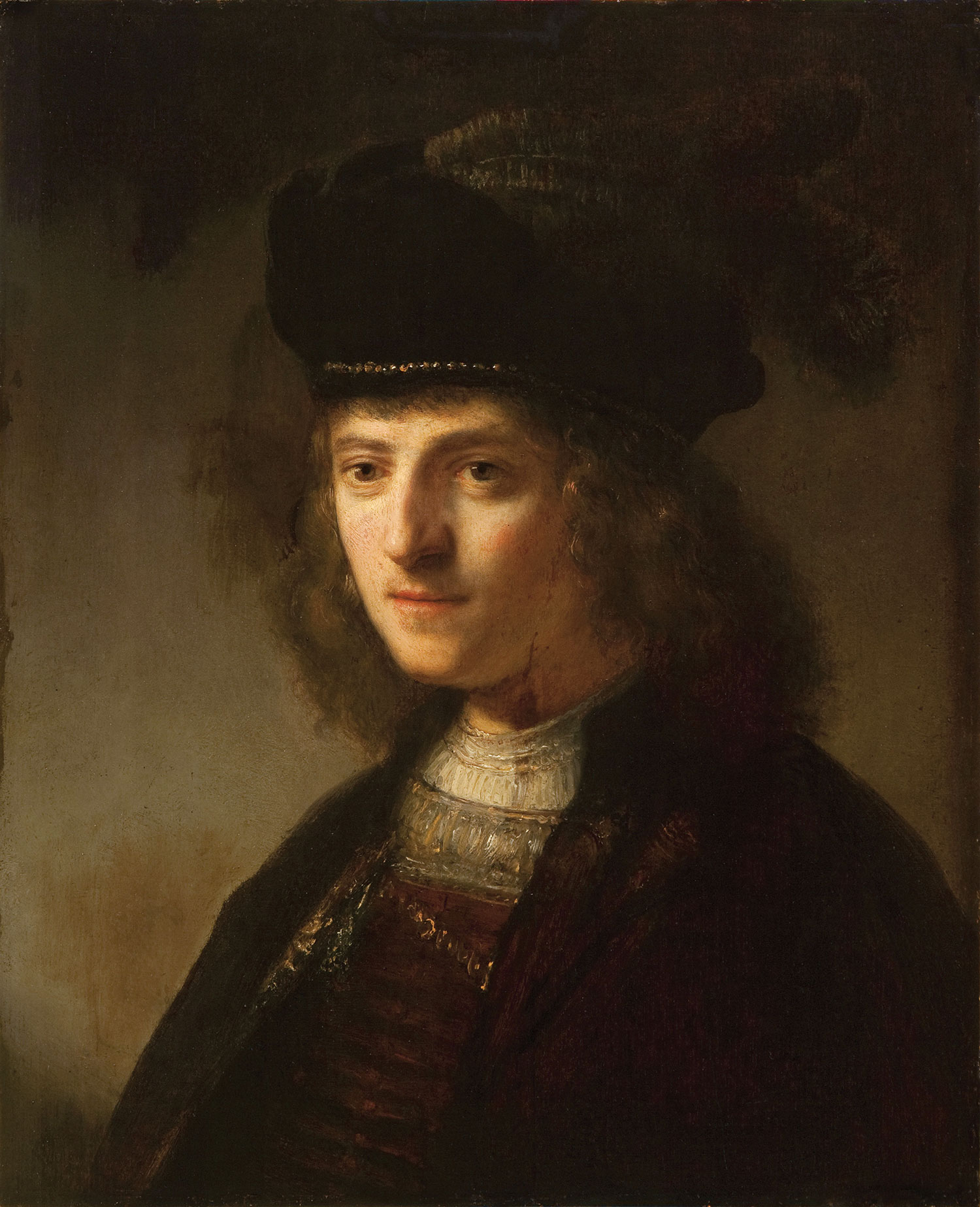
Govaert Flinck (Dutch, 1615–1660), A Young Man in a Feathered Beret, about 1636, oil on panel. Taft Museum of Art, Bequest of Charles Phelps Taft and Anna Sinton Taft, 1931.416
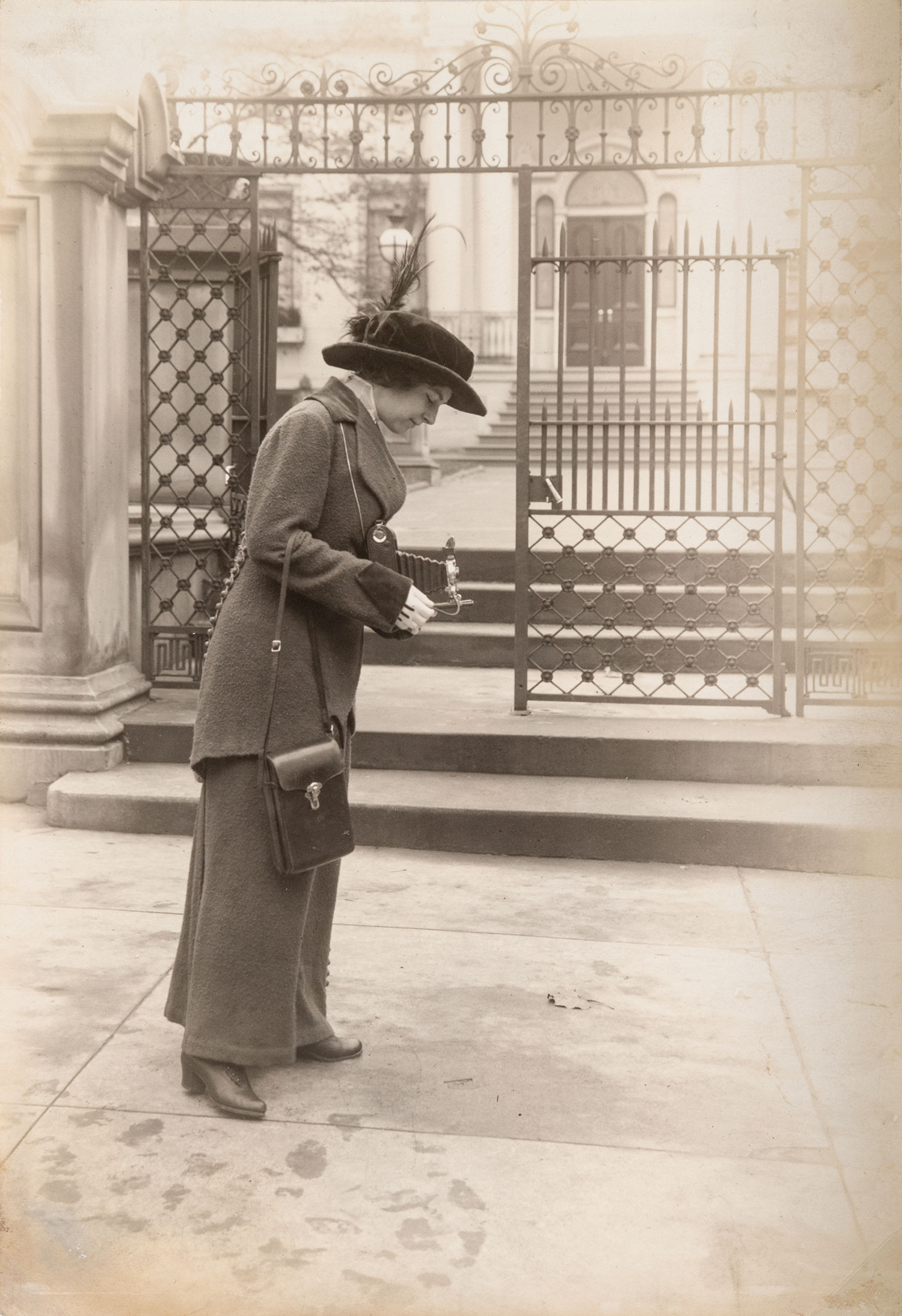
Nancy Ford Cones (American, 1869–1962), The Prize Kodak, about 1912, kallitype platinum print. Collection of J. Miles Wolf and Maura Wolf
